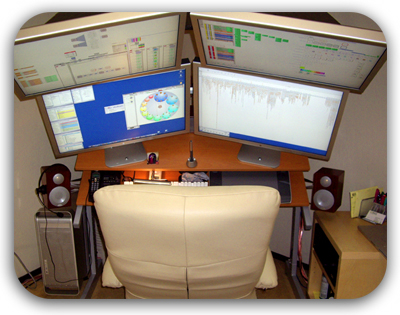Model of self-limitation within a social/economic framework
I may try to communicate how IT markets might be defined when there are very secure assertions in which developers interests are seen, operationally, as more important than consumers interests, thus creating a utility function that stabilizes an entrenched system that supports the income of developers, and only marginally addresses the needs of consumers. The Microsoft world is not the only example. Open source follows a similar system nature.
The modeling that Levine and Prueitt would like to do has to do with self-limitation, reflected in decision making, when there is an autopoietic envelop (Maturana's term) and a reinforcement mechanism such as career rewards. The decision stream is defined as a stream of individual decisions, taken one at a time. The decisions are about which proposal is to be funded. Decision makers are government program managers and venture capital firms. This is a general model of decision making when self-limitation is possible.
Suppose that two systems of thought co-exist. One thinks about Thomas Kuhn's work regarding paradigm shifts, and the works on “explanatory coherence” by Paul Thagard. These two works provides the basis for a model over a competition of ideas. Imagine that one system is created in such a way that the second system is inhibited by the success of the first system. This model would be similar, and also dissimilar, to the classical model of foxes and rabbits where low levels of rabbit population would inhibit the population of foxes. As the population of foxes comes down, the natural breading characteristics of rabbits elevate the population of rabbits. However, in this case, suppose that the second system of thought may not excite the first system even when the second school is almost extinguished. The drive for second school is seen as not being economic in nature, rather it is social in nature.
We would then have the classic on-center off-surround system of first order differential equations. Our model of the two systems is then captured if one system achieves a critical mass and then dominates the other system as a limiting distribution (or state). First order differential equations, often seen in even the simplest neural model, have on-center off-surround network.
In Levine and Prueitt (1989) (Levine, D. & Prueitt, P.S. (1989.) Modeling Some Effects of Frontal Lobe Damage - Novelty and Preservation, Neural Networks, 2, 103-116.) we have a layer of input and a layer of output processing with a gated di-pole serving as the mediator. So there was a reset for failure to fulfill a utility function. This feature of our work provided an orienting feature where failure to match utility results in a new contextual search. Frontal lobe mechanisms complete a biologically implemented architecture where by agility is supported so that orientation to novel stimulus over rides familiarity with past experiences.
Without this frontal lobe function, an autopoietic envelop might form whereby failure to fulfill utility function (human needs) is accommodated, and an "acquired inability" to make proper decisions is constructed as part of the systemic response mechanism. If this is so, both VC groups and government programs might actually be incapable of making decisions that shift the viewpoint from first to second school.
One can see the arguments that support such acquired inability in the way almost everyone talks about style in presentation of innovation as having to address the known behavioral patterns of VC groups and government program managers.
For example, the coreTalk design is essentially second school in nature. Among other features coreTalk has a designed utility function directly corresponding to a future market in products and services that are NOT PROGRAMMER oriented.
I have argued for many years that IT venture funding, and NSF, DARPA etc funding is focused on meeting the utility function defined by the IT industry, and not actually by the needs of government, intelligence, or the American public. Thus, consistent with my theory, I see the first school is self defining and having an inability to recognize novel technology, ie innovation. Using metaphor, I claim that the funding mechanisms have no frontal lobes.
I know of no way to introduce this complete issue, but feel that a neural model similar to the Levine Prueitt (1989) model of selective attention and orientation to novelty see in the paper might help.
The relationship to a model of self limitation seen in college freshman students has the same dynamic, so if we can develop these models we may find an ability to help innovations like coreTalk make the argument that a larger economic paradigm shift is possible. Other applications seem evident.
Golly! Economics is half of my degrees and an area I have worked in, so market failure
is something I know about.
There are basically two kinds of market failure -- bad incremental derivative or price signals,
and local minimum or lack of creativity problems. Each could be a book in itself, and I don't
have time for a book this morning...
I do give lots of examples on the energy part of www.werbos.com -- though the page on Islam also contains some stuff on energy economics (can you guess why?).
Low oil prices and high interest rates are an example of the first kind, mostly (though there
is a kind of lack of creativity in the politics behind some of it..). Barriers to entry, gaps in F&D and
being on the wrong side of reflexive phenomena (see Soros) are examples of the second kind.
Lack of creativity occurs in brains as well, of course, and is another thing we have spoken about and written
about many, many times before... as is plastered all over my web page.
Also, google on "COPN neural"; NSF agrees, and has been looking for 'solutions'....
Best of luck to us all,
Paul
